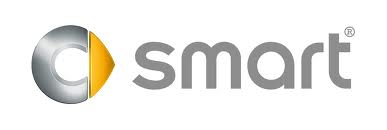ForTwo L3-1.0L (2009)

Paint: Service and Repair
AH98.00-P-9408-02MCC Notes on paintwork repairs
AH98.00-P-9408-02MCC Notes On Paintwork Repairs
Notes on paintwork repairs
The use of DaimlerChrysler approved materials is absolutely necessary for proper repair because the material characteristics of the recommended
products influence the work results and working time.
Only the cleaning agents released by DaimlerChrysler are to be used for reconditioning powder-coated parts (see care instructions). Plastic parts with
recorded working time are always removed for painting.
General preparatory work for painting:
General preparatory work for painting includes masking, preparing the paint, cleaning or degreasing and sanding the part; furthermore preparing the
filler and setting up and cleaning the machines; in addition, transport of the vehicle to the workplace as well as wearing protective clothing.
Additional preparatory work for painting:
Additional preparatory work for painting includes e.g. matching the color.
The time values specified by DaimlerChrysler relate to the actual painting work with the general preparatory work for painting.
The assembly operations and bodywork required are not included.
Warning: Vehicles with diesel engines should on no account be started up when in the spraying or drying booth. There is a risk of explosion due to
preglow.
The following steps should be observed before and during repair work:
Disconnect the battery at the negative pole (secure the radio code beforehand). Open convertible soft tops. Mask off rear lamps, rear side windows and
the headlamps with heat reflecting material. Only open tank cap slightly once in drying booth and close again immediately after drying. Remove spray
cans or similar other objects representing a fire risk from the vehicle. The drying temperature (or object temperature) of 60 °C must not be exceeded.
The stages for paintwork on body panels are categorized into 3 paint stages:
Stage 1 is categorized into:
1-E New part paintwork of welded-in body panels with complete paintwork structure (e.g. following sectional repair).
1-M New part paintwork of removed body panels with complete paintwork structure (e.g. doors, flaps).
1-J Body inner surfaces.
Stage 2:
Surface paintwork (e.g. with minor paint damage without spackle application).
Stage 3:
Post-repair refinishing with a spackle application of up to 50 % (e.g. following dent removal).
Very minor damage on Tridion:
Immediately cover minor paint damage such as scratches, gashes or stone chipping by means of a gravity cup gun or other means of repair (e.g. spray
can, touch-up paint pen) to avoid corrosion formation.
When corrosion starts, the corrosion points should be rectified immediately and thoroughly. Finally corrosion protection primer is first applied to the
point before the top coat is applied. The outside of the vehicle must be clean and dry for painting work. Ambient temperature should be at least +15 °C.
The primary coat must not be damaged.
Rectifying cracks in seam seal:
Lift up the windshield surround and fix in position. Remove powder paint in the seam area without damaging the joining radius. Remove the old seam,
for example, with a suitable compressed air milling machine. Then remove the grinding dust and smooth the edge areas. Then mask off the edges of the
join so that the bonding edge is under the joining radius.
Apply repair sealing and then smooth immediately. Then remove adhesive tape immediately. Observe the manufacturer's drying specifications. Protect
the rest of TRIDION from paint mist.
